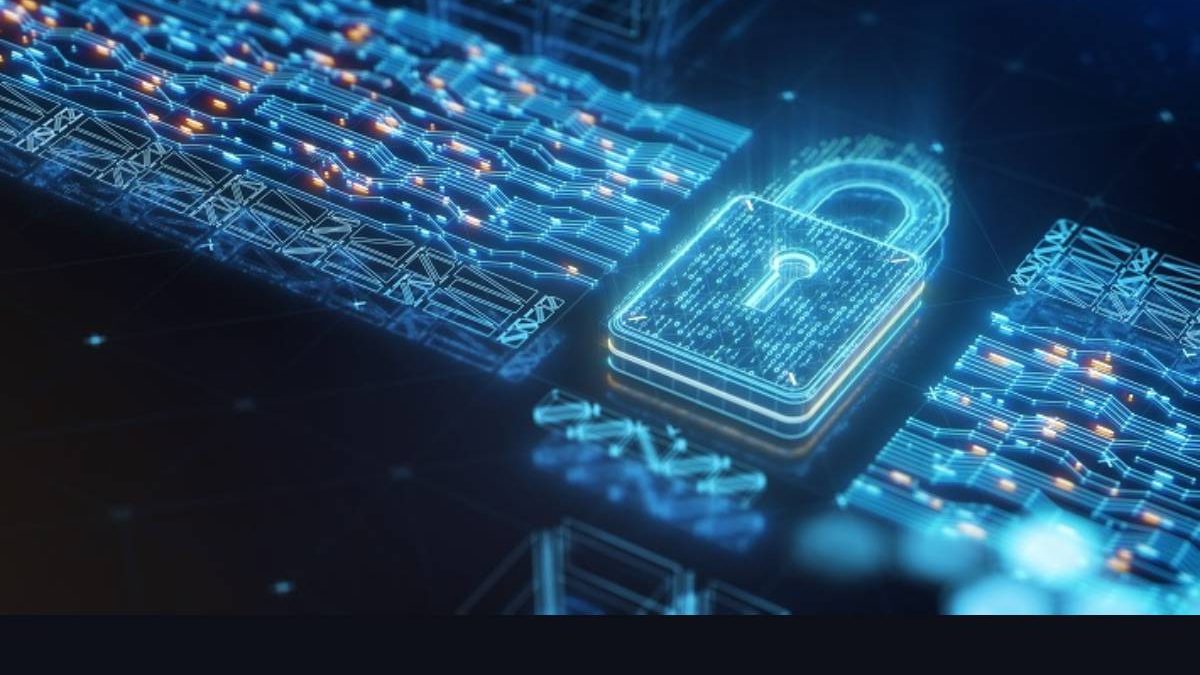Most modern messaging service providers implement end-to-end encryption on their platforms. (WhatsApp, Zoom, Facebook, and others)
The word “encryption” carries a promise of solid cybersecurity, but what does end-to-end encryption truly represent? Encrypting data means you can’t read it unless you have a decryption key; that one is easy.
But where does “end-to-end” fit? And how does it benefit users?
Let’s explore and find out.
Table of Contents
What Is End-to-End Encryption?
End-to-end encryption (E2EE, for short) is a secure approach to communications preventing any third party from accessing data during transfer from one end device or system to another.
Via E2EE, communication data goes through encryption on the sender’s device, travels through a secure path to reach the recipient, and only they can decrypt it. The message can’t be read or corrupted by app service providers, internet service providers (ISP), or hackers in travel.
How Does E2EE Work?
A cryptographic key is the star of E2EE, and it encrypts and decrypts messages and resides on the endpoints of the communication chain. Such an approach uses public-key encryption.
Public-key encryption (also called “asymmetric”) presents a public key to share with others to encrypt their messages and a private key for you to decrypt them.
Once you share your public key with senders, they can use it to encrypt a message and send it to you. Afterwards, you can decrypt the data via the corresponding private key. (also called “a decryption key”)
As we’ve all experienced, online communications almost always rely on an intermediary to hand off messages between parties. It could be an ISP, a telecommunications company, a social media platform, or others. E2EE ensures the intermediary, no matter their services’ nature, shouldn’t be able to eavesdrop on your private conversations.
What Does End-to-End Encryption Protect from?
E2EE protects from two main communication threats – prying eyes and message tampering.
End-to-end encryption restricts access to transmitted data to anyone but the recipient. It’s as if you sent a titanium box, chained and locked with multiple sophisticated padlocks, and only the recipient has the keys for all of them.
Although it’s hard to imagine such communication in the physical world, you can easily achieve it in the virtual one. Furthermore, encryption experts are constantly developing new encryption methods and fortifying old ones to ensure communications privacy.
Aside from privacy, E2EE guarantees the integrity of private messages. Even if your message is hijacked during transit, no one can decrypt it and change it. Modern encryption makes it impossible to tamper with a message and still make it look authentic upon arrival. Should someone change the message in transit, the recipient will receive a garbled pile of symbols upon decryption – a sure sign that someone has interfered with the communication.
Now, we have both privacy and integrity of communications covered. However, E2EE is not an automatic fix to all data-transfer problems.
What Doesn’t End-to-End Encryption Protect Against?
E2EE is a robust cybersecurity asset; it encrypts the entirety of your communication, and only the recipients can decrypt it. Nonetheless, E2EE doesn’t hide the fact that you’ve communicated with a specific person.
The servers can’t read the exchanged messages, but it is undeniable that you’ve communicated on a particular day and time.
Secondly, if someone gains access to your communication device, they will be able to access, read, and join your communication. Therefore, sensible E2EE includes proper device and app protection if your device gets lost or stolen, even if you rely only on a PIN code.
However, it’s optimal to use antivirus software to ensure your communication stays private.
Even if your device is on your person, malware can penetrate the communication and allow third parties to read your correspondence as if they were holding the device. Furthermore, even if you take all the steps to protect communications, your recipient may not be, and end-to-end encryption can’t help in such a scenario.
Why Is End-to-End Encryption Important?
End-to-end encryption is necessary because it provides users with a secure path to communicate. Messages, emails, and attachments stay encrypted until the recipient receives and decrypts them.
This is vital in both personal and business communications.
Keep in mind that services like Yahoo, Microsoft, and Google hold copies of users’ decryption keys and can access the data you send or receive. A well-constructed E2EE system restricts the providers access to decryption keys altogether.
Advantages of End-to-End Encryption
To summarise, let’s go over the significant advantages of E2EE.
-
Anti-hack protection
Since you are the only one in possession of a private key to decrypt received data, hackers can’t access it properly.
-
Privacy
On a properly built E2EE system, only the sender and the receiver have access to communication details. Not even the communication service provider can access your messages.
-
Tamper-proof
E2EE exclude the transmission of a decryption key. The recipient already has one, so no hacker can intercept it during transit. Even if someone manages to tamper with the message, the recipient will be aware of the tampering upon proper decryption.
-
Compliance
End-to-end encryption allows an organization to protect their data by making it unreadable to outside parties.
-
Admin protection
Since server admins don’t usually hold decryption keys, hacker attacks against them won’t be as proficient.

